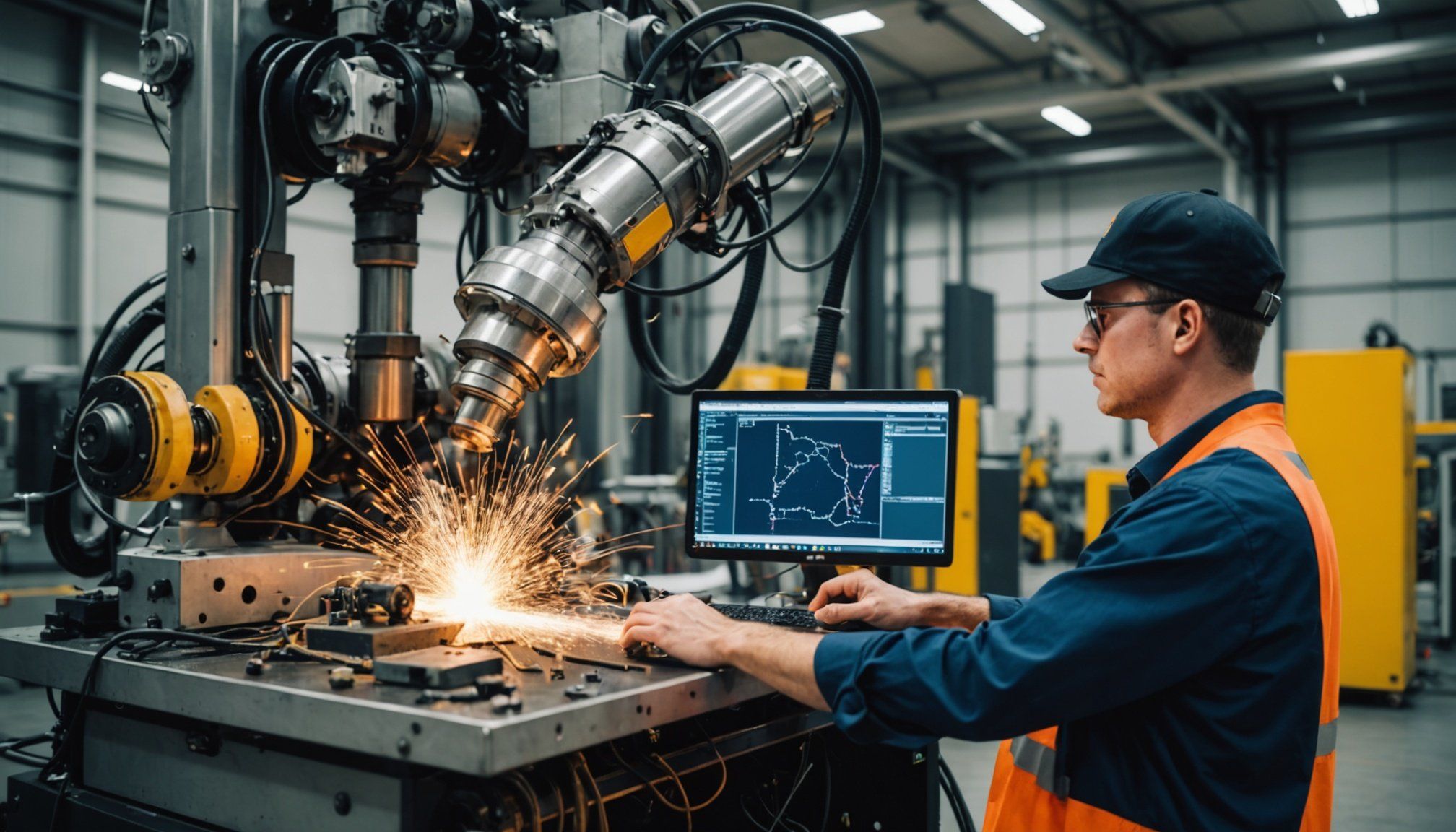In the ever-evolving landscape of the industrial sector, the quest for enhancing equipment performance while minimizing unexpected downtime has never been more urgent. With the advances in technology, particularly in machine learning, predictive maintenance stands as a beacon of hope, promising enhanced system reliability and optimized manufacturing processes. Machine learning algorithms are transforming the way maintenance is approached, being both proactive and strategic. This article explores the profound implications of applying machine learning in predictive maintenance within industrial settings, offering insights into how this model reshapes the industry.
Understanding Predictive Maintenance and Machine Learning
Predictive maintenance is a strategy aimed at predicting when an equipment failure might occur and preventing it by performing maintenance at the right moment. The central aim is to minimize the downtime of industrial systems, increasing the lifespan of the equipment and optimizing production schedules. Unlike traditional maintenance methods, which can be time-consuming and inefficient, predictive approaches leverage data and analytics for more timely and precise interventions.
Also to see : How can businesses use sentiment analysis to improve customer relationship management?
Machine learning is pivotal in driving this transformation. By analyzing vast amounts of operational data, machine learning models can uncover patterns and insights that may not be visible to the human eye. With the ability to learn from historical performance data, these algorithms can predict potential failures and suggest the optimal time for maintenance. This proactive approach not only enhances operational efficiency but also reduces costs associated with unexpected downtime.
Integrating machine learning in predictive maintenance involves several steps, including data collection, data cleaning, model training, validation, and deployment. Each step requires meticulous attention to detail, ensuring that the model accurately predicts failures while reducing false positives.
Also to read : What are the best approaches for fostering innovation in established tech companies?
The implications of this integration are far-reaching. For one, it changes the maintenance paradigm from reactive to proactive, significantly reducing unscheduled stoppages. By predicting equipment failures before they occur, organizations can plan maintenance activities during non-critical production times, ensuring minimal disruption.
Moreover, the application of machine learning promotes data-driven decision-making. With predictive analytics, managers can make informed decisions that enhance performance and productivity. This approach aligns with modern industry trends emphasizing efficiency and sustainability.
Key Benefits of Machine Learning-Based Predictive Maintenance
The adoption of machine learning-based predictive maintenance offers numerous benefits, making it a game-changer for the industrial sector. Here, we delve into the key advantages that this innovative approach brings to manufacturing and production processes.
Enhanced Equipment Reliability
Integrating machine learning into maintenance practices significantly enhances equipment reliability. By continuously monitoring equipment performance and identifying patterns indicative of potential failures, organizations can preemptively address issues before they escalate into severe problems. This not only ensures smoother operations but also extends the lifespan of industrial equipment.
Cost Efficiency
Traditional maintenance methods often lead to either over-maintenance or unexpected downtime, both of which are costly. With machine learning algorithms, maintenance is performed only when necessary, reducing labor costs and minimizing parts replacement. The result is a more cost-effective approach that aligns with an organization’s budgetary constraints.
Improved Safety and Compliance
Safety is paramount in any industrial setting. Predictive maintenance powered by machine learning helps maintain equipment in optimal working condition, reducing the risk of accidents caused by equipment malfunctions. Furthermore, adhering to regulatory standards is crucial, and predictive maintenance ensures compliance through continuous monitoring and timely interventions.
Better Resource Allocation
With accurate failure prediction, organizations can allocate their resources more effectively. Personnel can be scheduled based on the actual maintenance needs rather than arbitrary timelines, optimizing workforce deployment while ensuring skill availability when required.
Competitive Advantage
In a competitive industry landscape, staying ahead is crucial. Employing predictive maintenance gives companies a competitive edge, as they can maintain uninterrupted production cycles and meet client demands efficiently. This reliability fosters stronger relationships with clients, enhancing brand reputation.
Challenges and Considerations
Despite the promising benefits, implementing machine learning-based predictive maintenance is not without its challenges. Understanding these hurdles is crucial for organizations looking to harness the full potential of this technology.
Data Quality and Availability
The success of predictive maintenance hinges on the quality and availability of data. Poor data quality or insufficient historical data can lead to inaccurate predictions, undermining the effectiveness of the machine learning models. Organizations must invest in robust data collection and management systems to ensure reliable inputs for their algorithms.
Integration with Existing Systems
Integrating new machine learning technologies with existing industrial systems can be daunting. Many industrial facilities operate with legacy systems not designed to handle modern algorithms or data analytics. Companies must consider the compatibility of new technologies with their current infrastructure and be prepared for potential system upgrades or overhauls.
Skilled Workforce
Another significant challenge is the need for a skilled workforce capable of developing, implementing, and maintaining machine learning models. Organizations must invest in training or hiring personnel with expertise in data science, machine learning, and industrial systems to realize their predictive maintenance objectives.
Cost Implications
While predictive maintenance is cost-efficient in the long term, the initial setup can be expensive. Costs associated with acquiring the necessary technology, training staff, and possibly upgrading existing systems may pose financial challenges, especially for smaller enterprises.
Data Security and Privacy
Handling vast amounts of data brings security and privacy concerns. Ensuring that sensitive operational data is protected against breaches is imperative. Organizations must prioritize data security measures, such as encryption and secure access protocols, to safeguard their industrial data.
The Future of Predictive Maintenance in Industrial Settings
As the industrial landscape continues to evolve, the future of predictive maintenance appears promising, driven by advancements in machine learning and data analytics. With the increasing availability of big data and the development of more sophisticated algorithms, industries can expect further enhancements in maintenance strategies.
Expansion into Other Sectors
While predictive maintenance is already making significant inroads in manufacturing, its potential extends far beyond. Sectors such as energy, transportation, and healthcare are poised to benefit from predictive insights, optimizing equipment performance and reducing downtime across diverse applications.
Integration with IoT Technologies
The integration of the Internet of Things (IoT) with machine learning will drive the next wave of advancements in predictive maintenance. IoT sensors can provide real-time data on equipment performance, feeding machine learning models to ensure more precise and timely predictions.
Evolution of Algorithms
As machine learning algorithms evolve, they will become more adept at handling complex industrial scenarios. This evolution will lead to more accurate predictions and recommendations, accommodating a wider range of equipment types and failure modes.
Increased Collaboration
Collaboration between technology providers, academic institutions, and industry stakeholders will be crucial in advancing predictive maintenance solutions. By pooling resources and knowledge, these partnerships can drive innovation and address common challenges faced by the industry.
Sustainable Practices
Incorporating machine learning in predictive maintenance contributes to sustainability, reducing waste by ensuring that equipment is maintained when necessary rather than on a fixed schedule. This practice aligns with the growing emphasis on sustainable industrial processes, helping organizations meet environmental goals while optimizing operations.
The implications of machine learning on predictive maintenance in industrial settings are far-reaching, offering a transformative approach to equipment management and maintenance. By leveraging the power of data and advanced algorithms, industries can usher in a new era of efficiency and reliability, minimizing downtime and maximizing performance.
While challenges exist, the benefits of integrating machine learning-based predictive maintenance are undeniable. As technology advances, industries must adapt and innovate to stay competitive. By embracing this modern maintenance strategy, organizations not only enhance their operational capabilities but also contribute to a more sustainable and efficient industrial future.
In this ever-competitive landscape, staying ahead means adopting cutting-edge solutions that redefine operational standards. Predictive maintenance powered by machine learning is not just a trend—it’s a necessity for any industry aiming to thrive in the modern era.











